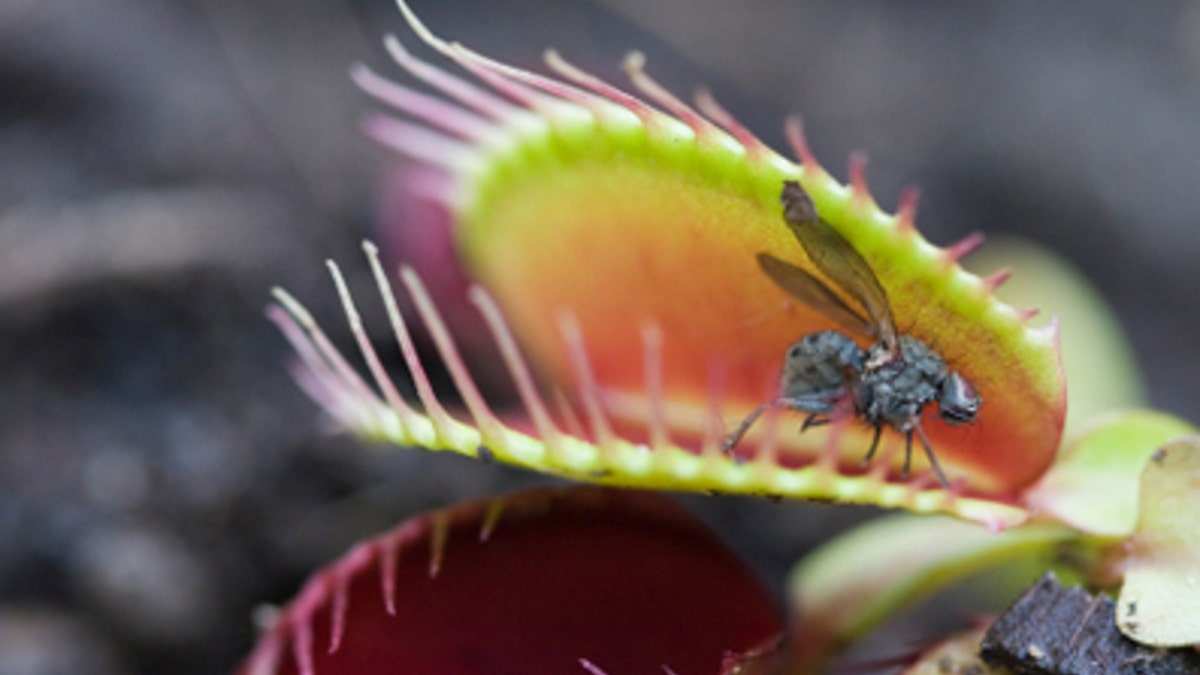
(Mark Goddard)
While most of the plants you’d find in a garden are harmless beauties, not all are so innocent and a few can even be downright deadly. But some gardeners prefer to grow on the wild side, cultivating botanical killers that can be as beautiful as they are lethal.
From rat-eating carnivores to toxin-producing plants tapped by KGB assassins, these are some of the strangest and most deadly botanicals you can grow in your garden, and a few wild killers that might already be growing between your rose bushes, unbeknownst to you. While they shouldn’t be feared — after all, you’d have to eat them to feel their toxic wrath — they should be treated with respect and commonsense by gardeners. For a more thorough chronicling of deadly vegetation, be sure to check out Amy Stewart’s excellent title “Wicked Plants: The Weed That Killed Lincoln's Mother and Other Botanical Atrocities.”
Hemlock
The plant used to poison the ancient Greek philosopher Socrates, hemlock was a popular method of execution in the ancient world. Despite its incredible lethality — possibly the most lethal of any plant that you’re likely to encounter — hemlock is quite the common weed. Closely related to the carrot and parsnip, this plant is occasionally mistaken for its edible brethren, with deadly results. Paralysis slowly creeps across the body until it sets in on the heart and lungs, killing you in a manner of minutes. While many poison plants have a place in the garden (so long as you don’t eat them) this one is not to be trifled with.
Rhubarb
The leaves of this tart treat are quite toxic. The stalks that go into your grandma’s rhubarb pie are fine to consume, but the leafy green part contains oxalic acid, a compound that can produce nausea, vomiting and burning in the mouth. While dangerous, you’d have to consume a considerable amount of leaves to get a lethal result, so this plant is more likely to merely make you violently ill than to kill you quickly.
Castor bean plant
In 1978 a Soviet spy used a poison-tipped umbrella to assassinate a Bulgarian journalist in London. The poison on the tip of that umbrella was ricin, a toxin found in abundance in castor beans. Despite its lethality — one seed can be enough to kill a child — castor bean plants are actually quite popular with gardeners. Since its toxin is equally lethal for pests, these handsome plants are quite easy to grow, and can be used to shield other plants from unwanted infestations. That said, if you have small children or curious pets that roam the backyard, it’s better to stay away from this one.
Pitcher Plant
Got a rodent problem in your house? Get a pitcher plant. These carnivores have been known to capture and devour whole rats and other small animals careless enough to fall into their traps. With nectar to lure its prey into the deep-welled pitcher-shaped orifice, the greedy insects and animals slide down the slick sides, never to emerge again. As residents of the rain forests of Borneo, these plants can be a little tricky to grow at home, as they require warmer temperatures and high humidity. However, these plants can be a great project for an advanced gardener.
Venus Fly Trap
The most infamous of the flesh-eating plants, the venus fly trap is a seemingly exotic plant that is actually native to the Carolinas and can be grown fairly easily at home.
These plants patiently wait for an unsuspecting insect to land upon its lobes, at which point it snaps shut and slowly begins to digest its prey, sealing it in a leafy green coffin.
Monkshood
Sometimes mistaken for the edible horseradish root, monkshood is one of the most deadly plants found growing in the wild. Which is a pity because monkshood is quite a beautiful plant, with slender blue flowers that drape down like a monk’s hood, giving the plant its name. Fans of “True Blood” or “Harry Potter” might know this plant by one of its other names, wolfsbane, which is said to be capable of slaying a vampire or aiding werewolves in their transformation. While these fantastical uses have never been confirmed, monkshood will certainly kill a regular person in as little as 2-6 hours, progressing from tingling and nausea to total heart failure.
Nightshade
Producing plump black berries that are deadly poisonous, the nightshade is a close relative of tomatoes and potatoes. In fact, even today, fans of Carolina-style barbecue can still see evidence of the close ties between these plants. Believing the tomato to be as deadly as other varieties of nightshade, early settlers opted for other ingredients in their cooking, giving rise to many of the vinegar- and mustard-based sauces used in Carolina barbecue today. While tomatoes are perfectly safe, the fruit of the nightshade plant, also known as Devil’s berry, can cause sweating, blurred vision, and delirium. As few as 10 berries can be lethal, so please, don’t mix these in with your barbecue sauce.